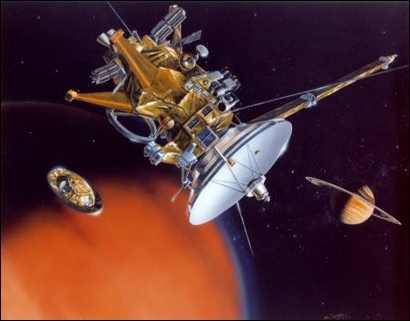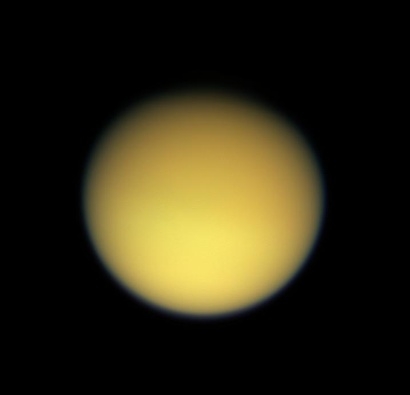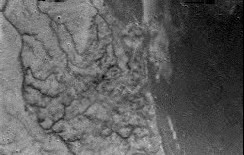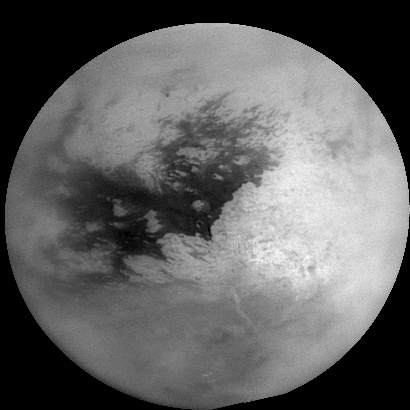Titan’s unique atmosphere

Titan, Saturn’s largest moon, is unique in the Solar System.
Studying it could shed new light on Earth’s past, and in particular tell us how the chemical composition of our planet’s atmosphere evolved.
Titan’s thick atmosphere consists of several layers and, like Earth’s, is mostly nitrogen.

These hydrocarbons react with each other, again under the effect of UV radiation, to form aerosols that create an orange haze as they fall, masking Titan’s surface.
The ACP1 instrument on Huygens was able to precisely measure the chemical composition of Titan’s atmosphere, collecting and analysing a number of samples of aerosols during the probe’s descent.
The methane cycle

The erosion channels have been cut by a fluvial network sustained by methane rain.
This loose material is thought to consist of hydrocarbon aerosols that fall from the upper atmosphere.
This spongy layer’s “elasticity” could be due to the presence of liquid methane. The surface also seems to be dotted with blocks of water ice or “ice pebbles”.

For methane to still be present in Titan’s atmosphere, there must be a source of “make-up” methane to compensate for the fraction trapped and converted into hydrocarbons.
This implies a big subsurface reservoir of methane.
Readings from the GCMS2 instrument indicate that Titan’s methane is probably generated by internal geological activity.
The Huygens probe hasn’t revealed all its secrets yet. Combined with those the Cassini orbiter is continuing to gather, its data still have much to tell us as scientists bring the face of Titan into sharper focus.
| Titan at a glance | |
| Diameter | 5,140 km |
| Mean distance from Saturn | 1,22,850 km |
Period of rotation | 15.9 days |
| Orbit around Saturn | 15.9 days |
| Surface temperature | - 179°C |
| Surface pressure | 1,5 bars |
| Atmospheric composition | Nitrogen (95%), Methane (1,5% to 5% depending on the altitude) |
2GCMS : Gas Chromatograph Mass Spectrometer